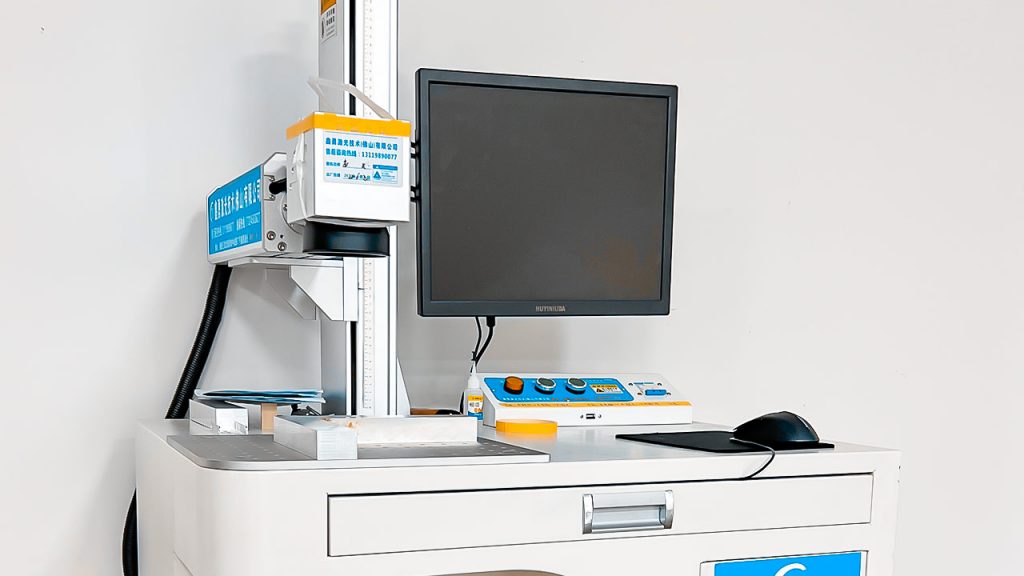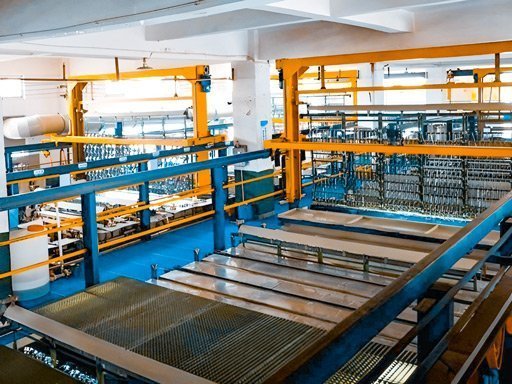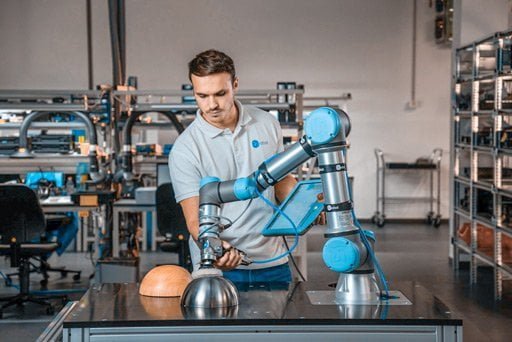When determining whether or not a product is of good quality, attention to detail in its surface finishing is crucial. The surface finish is often the last step in the production process, regardless of the material used. There are numerous appliances, pieces of equipment, and other objects we interact with daily, and many of them have finished surfaces or need components with a surface finish. Therefore, these procedures are often required in all companies.

Multiple surface machining methods exist for improving a substrate’s surface, but they all have the same result. In this way, the material’s surface becomes more uniform and uniform in texture. However, corrosion and wear resistance, surface texture, coloring, and coating are all factors in how these various procedures influence the surface of a product. Thus, each one has its unique features and applications.
Choosing among the various surface finishing techniques for a given product is difficult. This complete guide on surface finishing has been produced to make your life as straightforward and stress-free as possible. Read on to learn about the nuances between finishes and how different vendors may operate.
What is Surface Finishing?
Surface finishing encompasses various manufacturing procedures that enhance a product’s visual appeal, mechanical properties, and other qualitative characteristics. They transform the substance by including new elements, changing the makeup of existing ones, removing part of it, or molding it in a new form. Mechanical, chemical, or electrical processes often accomplish these responsibilities.
The surface finish may be achieved in many ways, but at its heart, it is the process of altering the surface of an object (or substrate) to obtain the desired quality. Depending on a number of circumstances, one’s final surface quality requirements may vary significantly.
Why Is There A Need For Surface Finish?
The amount of surface finish may affect the functionality of the device. When you need to assemble two pieces, you’ll want to locate a relatively smooth surface so they can fit together. When working with a vendor to produce components, the vendor must employ materials that add to the functioning of the element. There is considerable variance in surface finishes; thus, you must ensure that the finish is just right.
Following are some of the reasons why surface finishing is opted for so frequently:
- Protection against corrosion is improved
- Assisting in the bonding of various coatings
- Damage to the surface is repaired.
- Elevated Immunity to Chemicals
- Enhanced conductivity and enhanced electrical conduction at the surface
- Superior durability and wear resistance with less frictional impacts
- The improvement of aesthetics
Types Of Surface Finishing

It’s possible to observe the surface finish from two perspectives at once. From the designer’s perspective, a part’s performance might be affected by the part’s surface quality. From the machinist’s point of view, surface finish is the end result of the procedures used and may be altered by changing those processes.
The Following processes are defined under the following two methods:
- Adding or Altering Process
- Removing and Reshaping Process
· Electropolishing
Electropolishing is similar to electroplating in that both processes include the use of electricity and chemical reactions; however, in electropolishing, ions are removed from the surface being treated, while in electroplating, ions are added to the surface. Electropolishing is a typical procedure for deburring and lowering average surface roughness to obtain a smooth, level, and flaw-free surface. Metals such as stainless steel, aluminum, copper, titanium, nickel, and copper alloys are often electropolished. This method is particularly beneficial for metals in the food, medicinal, and pharmaceutical sectors.
· Painting
Engineers often demand painting as a surface treatment to improve a product’s aesthetic and corrosion resistance. Spray painting, electrostatic painting, dipping, brushing, and powder coat paint are the most popular techniques for applying paint to the surface of a component. An alternative is to paint using a powder coat.
Metal components may be protected against a wide variety of environmental conditions by using any of a number of different paint formulas. The automobile industry has completely mechanized and mechanized the process of painting cars and trucks, using hundreds of robot arms to achieve remarkably consistent results.
· Sanding or Sand Blasting
These surface finishing procedures need relatively basic tools and equipment, but the personnel engaged must have a high degree of skill since they are primarily done manually. Automation developments have lowered the amount of required human labour, boosting the output’s dependability and consistency.
A surface layer is removed or changed in this kind of operation utilizing a variety of machining processes known collectively as abrasive machining. This procedure eliminates dry or wet surface imperfections from metal depending on the circumstances (using oils, water, or other liquids).
Abrasive machining processes are often required for metals such as aluminum, brass, cast iron, carbon steel, and stainless steel. Lapping is often used to manufacture optical lenses, bearings, and other components that need fine finishes and great accuracy.
· Electroplating
All kinds of electroplating include using electricity to drive an electric current through a bath of liquid to plate metals. The substrate is then treated substance, while the bath is a solution containing ions of the metal being added.
The substrate serves as a cathode when an electric current is delivered through it. It enables it to attract ions from the bath, which are then deposited on the treated surface. Higher durability, increased corrosion resistance, less surface friction, and improved aesthetics are a few benefits of this method.
This method treats zinc, nickel, copper, gold, silver, and other metals. However, we may use this process to cure almost any other metal.
· Vacuum Plating
Using a high vacuum at some point in the plating process is one of the most used methods for metal surface finishing. These processes include sputtering, ion plating, nitriding, and implantation. Another prevalent method is vacuum vapor deposition.
A highly regulated environment is required to produce ionized metals, oxides, and nitrides. Subsequently, the component is put in the vacuum chamber and prepared for the metal deposition technique, executed with outstanding precision. Titanium nitride is a surface treatment that increases the service life of high-carbon steel or carbide-cutting tools.
· Thermal Spraying
In this kind of surface treatment, components are first heated or melted, then accelerated, and finally collide with one another before being mechanically attached to the desired surface. In order to dissolve a wire or powder feedstock, which is often composed of metal or ceramic, it must first be introduced into a flame, an electrical arc, or a plasma stream.
On occasion, engineers may specify this method when a greater coefficient of friction is needed. In addition, it is often applied to more significant structural elements to give protection from high temperatures, such as a thermal barrier coating for exhaust heat management.
· Chemical Treatment
This method uses chemical reactions to create thin layers of sulfide and oxide. Metals can be colored, corrosion might be prevented, and surfaces could be primed for subsequent paint applications. Black oxide is one of the most common surface treatments for steel parts, and “passivation” is the process that removes free iron from the surface of stainless steel components.
· Powder Coating
Powder coating uses static electricity to put a dry powder on a surface. After the powder has been electrostatically deposited, the metal component is heated to “melt” the flakes, joining them and sticking them to the metal surface. Source employs powder coating on a wide range of items, from furniture and autos to farm and factory equipment and even athletic goods. When we talk about “liquid coating,” we often mean paint or coating that may be applied in a number of different ways, such as by brush, dip, electrostatic spray, and so on.
· Hot Dipping
The technique entails dipping the component into a dissolved solution of tin, lead, zinc, aluminum, or solder to generate a metallic coating on the element’s surface. In hot-dip galvanizing, pieces of steel are submerged in a vat of molten zinc. The guard rails along highways often have this finish applied to their exteriors. Corrosion protection is its principal function, especially in severe environments.
Essential Factors to Consider When Choosing Metal Surface Finishing
Several variables determine the approach you use to achieve the desired surface finish. In general, the most important thing is to research the following three topics:

Ø Production Speed of Surface Machining Methods
Consider the needed speed of delivery. Examine the time necessary to perform the various procedures involved in the mixed metal finishing alternatives.
Ø Degree of the hardness of a metal
This is especially important when applying techniques from the second category. You will need a more intense or vigorous abrasive when you access a harder metal. On the other hand, pressing too hard with softer materials may create damage to the parts that are difficult or impossible to fix.
Ø Costs and financial projections
There are undoubtedly several processes that, when applied to your specific scenario, seem to be the best option. However, some more challenging jobs may require specialized tools and equipment, causing you to exceed your budget. Check to see whether your decision will save you money in the long term.
Conclusion
It would help if you now had a better understanding of surface finishing due to reading this article. Additionally, you should now be familiar with the numerous finishing choices available for CNC machined components. The product’s finish has a significant role in determining its longevity and its different functions. As a result, ensuring that the appropriate surface finish is applied is essential.










